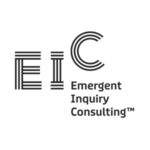Change is a constant in today’s organisations. New strategies, shifting markets and evolving technologies all impact how work gets done. As roles adapt to meet these demands, one important question emerges:
When has a role changed enough to require a formal review?
Many organisations have established internal guidelines, often expressed as a percentage threshold to determine when a role must be reviewed. That review might lead to a recruitment process, a job evaluation, or a complete redesign of the role.
While the idea is simple, the challenge lies in measuring change accurately and consistently. Too often, these decisions are made on instinct or informal discussions leaving room for bias, inconsistency and disputes.
The Role Evolution Model© – Bringing Structure to Role Change Decisions
EIC has developed the Role Evolution Model© to provide a clear, evidence-based framework for these high-stakes decisions. It evaluates two core dimensions:
- Magnitude of Change – How different is the new role compared to the old one?
- Impact on Role Identity – How critical is this change to the core purpose or strategic value of the role?
These dimensions are scored across defined organisational factors and translated into a clear, defensible percentage score.
Two Versions – Same Rigour, Different Focus
While the core principles remain the same, the Role Evolution Model© is adapted for different levels of the organisation:
- Leadership Model: Designed for senior roles with high strategic influence and organisational impact. It assesses shifts in leadership scope, strategic influence, stakeholder engagement, internal coordination, external engagement and operational oversight.
- Mid-Level Professional & Individual Contributor Model: Designed for operational, technical, or programme-focused roles. It evaluates changes in project scope, technical or specialist responsibilities, cross-team collaboration and delivery expectations.
This tailoring ensures that whether you are reviewing an executive position or a specialist role, the process is fair, consistent, and relevant to the realities of that role.
How It Works in Practice
The model uses a simple, structured scoring system across each dimension, with clear definitions to guide assessors. For example:
- Magnitude of Change considers shifts in responsibilities, authority, decision-making scope, and alignment with organisational priorities.
- Impact on Role Identity examines whether the role’s core purpose or value to the organisation has fundamentally shifted.
The combined score provides a percentage change that can be measured against your organisation’s internal threshold for formal review.
Each evaluation is supported by detailed documentation outlining the scoring rationale, evidence considered and the organisational factors influencing the assessment. This ensures transparency, supports compliance requirements, and provides a clear reference for future reviews.
Why It Matters During Change
During times of growth, restructuring, or strategic realignment, the Role Evolution Model©:
- Removes guesswork – providing a consistent, repeatable process for assessing change.
- Supports fairness and transparency – ensuring both incumbents and leadership understand the basis for decisions.
- Aligns with strategy – linking role design to organisational priorities, not just operational needs.
- Manages risk – reducing the likelihood of grievances, disputes, or compliance issues.
A Tool for Leaders, HR, and Change Teams
We have applied the Role Evolution Model© in a wide range of organizational context and change scenarios. In every case, it has supported clear, confident and fair role related decisions, helping organizations stay aligned, agile and future ready.

